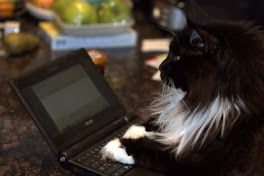Blended learning :Learning events that combine aspects of online and face-to-face instruction. A typical example of the delivery method of blended learning would be a combination of technology-based materials and face-to-face sessions used together to present content. This allows to cater for different learning styles.
Mobile learning earning across contexts and learning with mobile devices. Mobile phones, handhelds,pocket PCs, Ipods. Learning that happens across locations, or that takes advantage of learning opportunities offered by portable technologies. In other words, mobile learning decreases limitation of learning location with the mobility of general portable devices.
A virtual communityis a group of people that primarily interact via communication media such as newsletters, telephone, email, online social networks or instant messages rather than face to face, for social, professional, educational or other purposes. If the mechanism is a computer network, it is called an online community.
Flexible Learning is a set of educational philosophies and systems, concerned with providing learners with increased choice, convenience, and personalisation to suit the learner. In particular, flexible learning provides learners with choices about where, when, and how learning occurs.
Flexible learning approaches are often designed using a full range of teaching and learning theories, philosophies and methods to provide students with opportunities to access information and expertise, contribute ideas and opinions, and correspond with other learners and mentors. This may occur through the use of internet-based tools such as Virtual Learning Environments (VLEs) or Learning Management Systems (LMSes), discussion boards or chat rooms; and may be designed as a "blended" approach, with content available electronically and remotely, as well as "face-to-face" classroom tutorials and lectures.
Personalisation A system that
conforms to the learner, rather than the learner to the system. This is the
essence of personalisation. It demands a system capable of offering bespoke
support for each individual that recognises and builds upon their diverse
strengths, interests, abilities and needs in order to foster engaged and
independent learners able to reach their full potential. The relationship between
personalisation and digital technologies has the potential to reshape the
education system around the learner and to enable the learner’s voice to be
heard more powerfully in shaping the curriculum, contexts and practices of their
learning both in and out of schools.Personalisation is a process of dialogue – between learners and advisors, between education institutions and communities, between different forms of knowledge.http://www.futurelab.org.uk/resources/documents/opening_education/Personalisation_report.pdf
Just-in-time: Characteristic of e-learning in which learners are able to access the information they need exactly when they need it
Peer assessment enables students to give each other valuable feedback so they learn from and support each other. It adds a valuable dimension to learning: the opportunity to talk, discuss, explain and challenge each other enables students to achieve beyond what they can learn unaided. Peer assessment helps develop self-assessment, which promotes independent learning, helping children to take increasing responsibility for their own progress. It is not a new idea; my primary school teacher used it more then forty years ago. Students now use forums or e-mail to give each other feedback. However, netiquette must be observed.
Collaborative learning is an umbrella term for a variety of approaches in education that involve joint intellectual effort by students or students and teachers. Collaborative learning refers to methodologies and environments in which learners engage in a common task in which each individual depends on and is accountable to each other. Groups of students work together in searching for understanding, meaning or solutions or in creating an artifact of their learning such as a product. The approach is closely related to cooperative learning. Collaborative learning activities can include collaborative writing, group projects, and other activities.
Learning object the Institute of Electrical and Electronics Engineers (IEEE) defines a learning object as "any entity, digital or non-digital, that may be used for learning, education or training". Wiley describes a learning object as "any digital resource that can be reused to support learning". Chiappe defined Learning Objects as: "A digital self-contained and reusable entity, with a clear educational purpose, with at least three internal and editable components: content, learning activities and elements of context. The learning objects must have an external structure of information to facilitate their identification, storage and retrieval: the metadata. " (Chiappe, Segovia, & Rincon, 2007)
The following is a list of some of the types of information that may be included in a learning object and its metadata:
* General Course Descriptive Data, including: course identifiers, language of content (English, Spanish, etc.), subject area (Maths, Reading, etc.), descriptive text, descriptive keywords
* Life Cycle, including: version, status
* Instructional Content, including: text, web pages, images, sound, video
* Glossary of Terms, including: terms, definition, acronyms
* Quizzes and Assessments, including: questions, answers
* Rights, including: cost, copyrights, restrictions on Use
* Relationships to Other Courses, including prerequisite courses
* Educational Level, including: grade level, age range, typical learning time, and difficulty. [IEEE 1484.12.1:2002]
http://en.wikipedia.org/wiki/Learning_object
Subscribe to:
Post Comments (Atom)


No comments:
Post a Comment